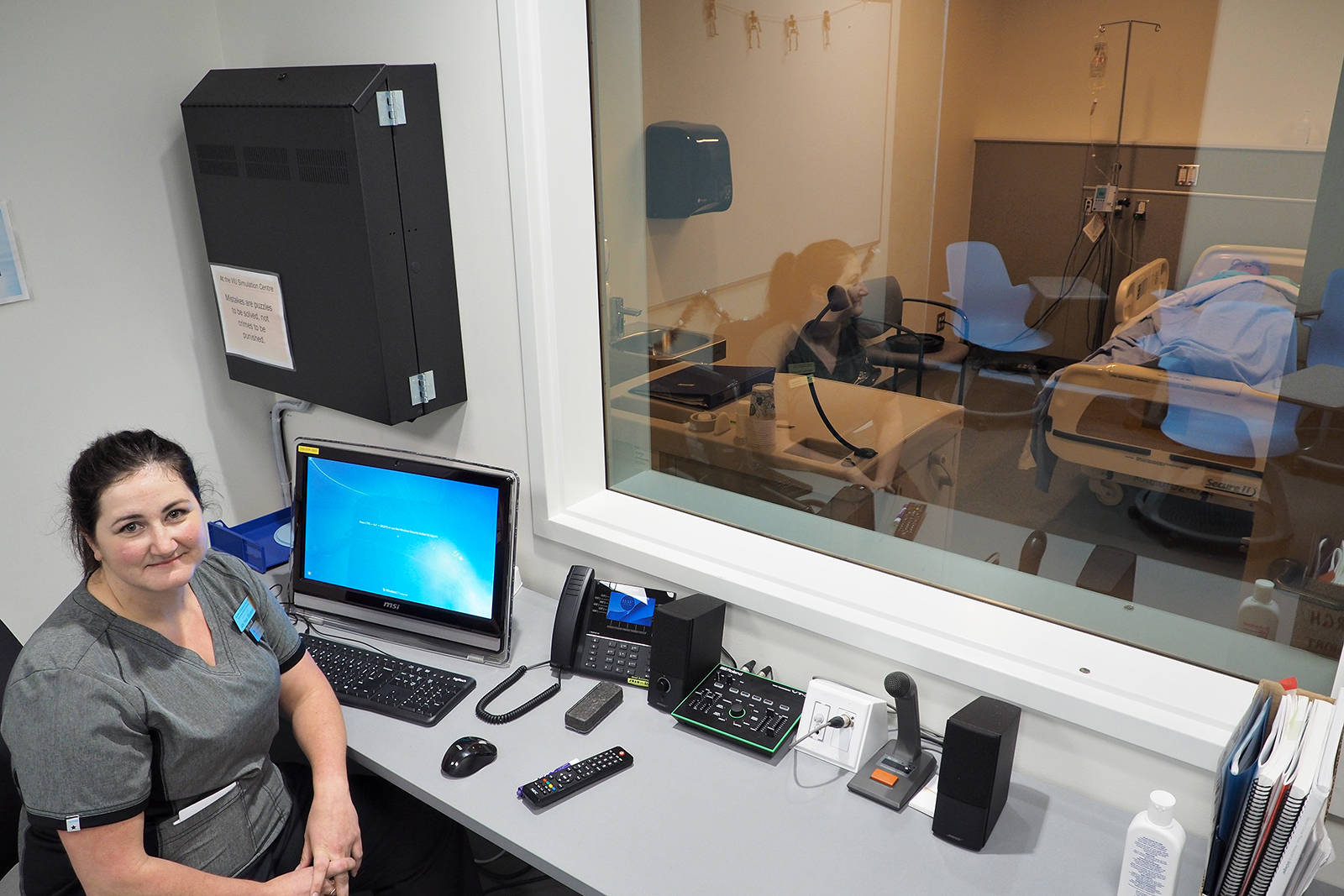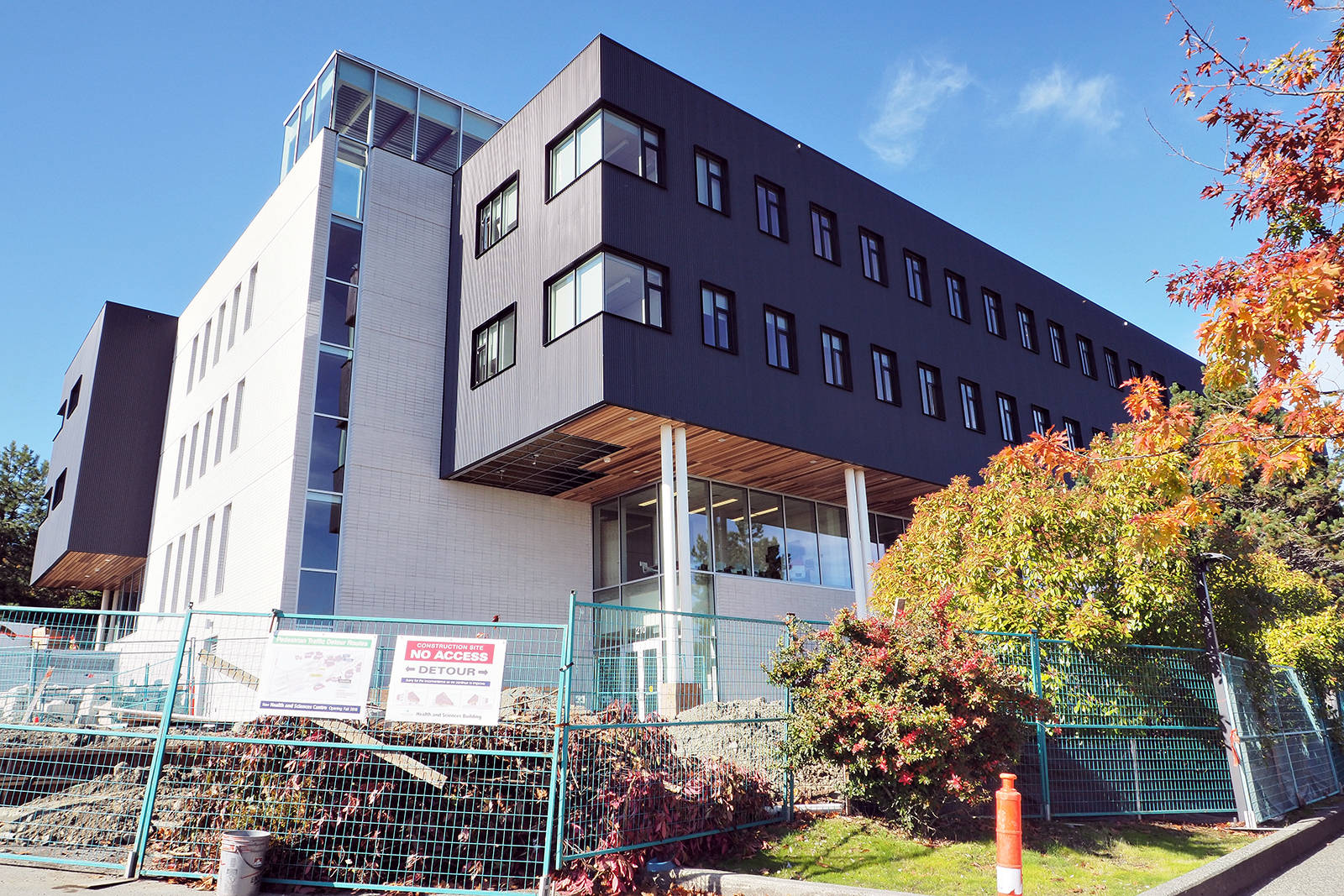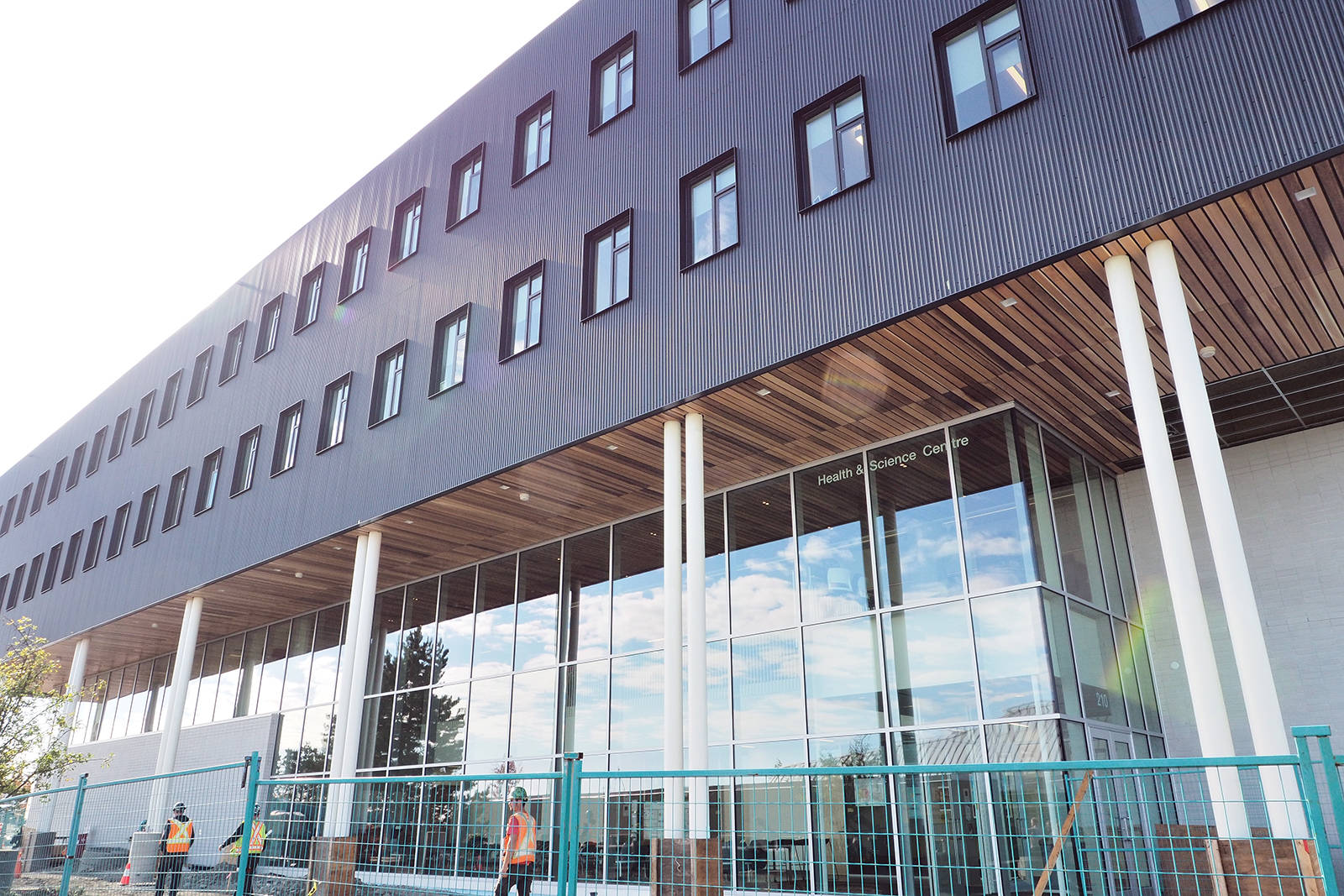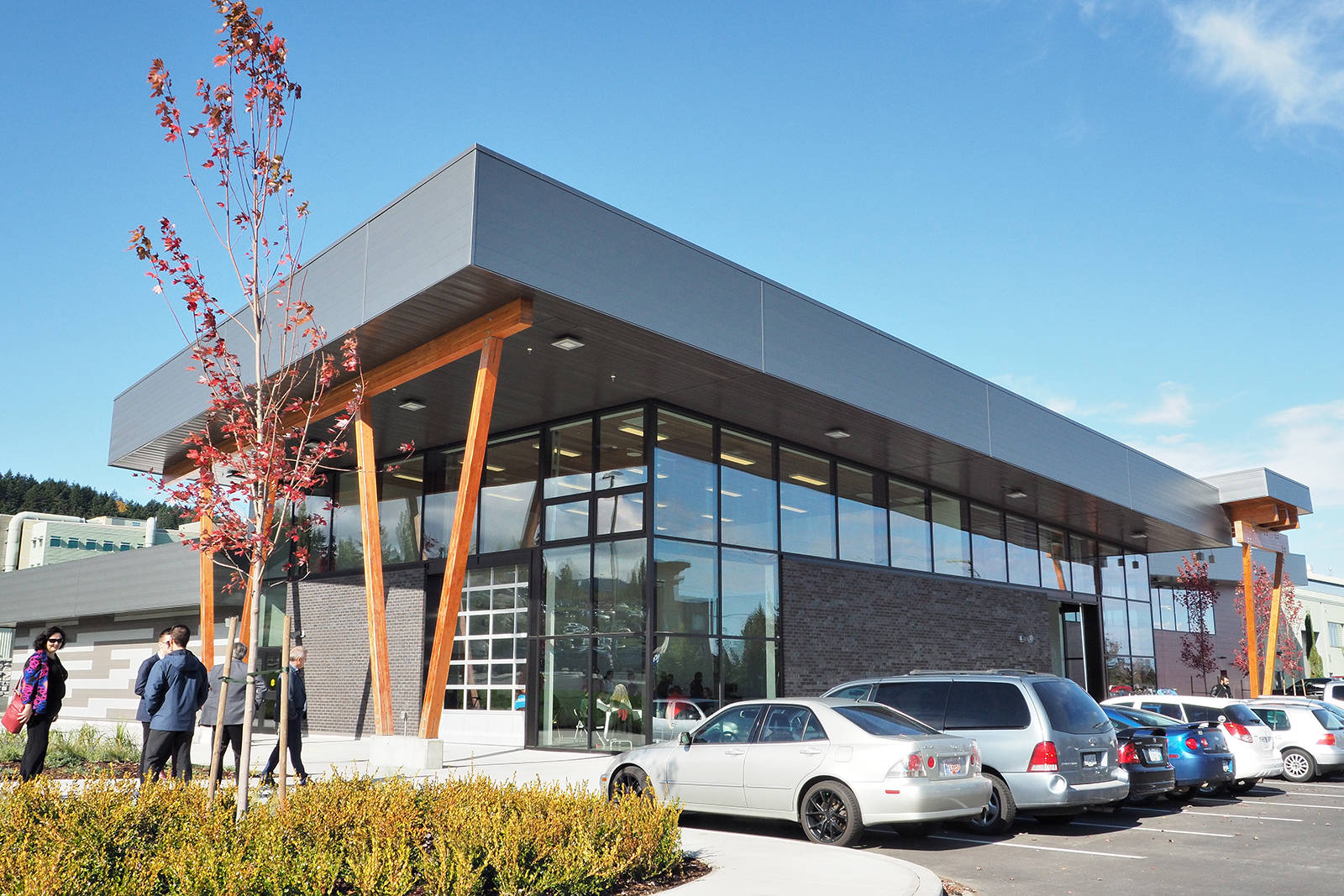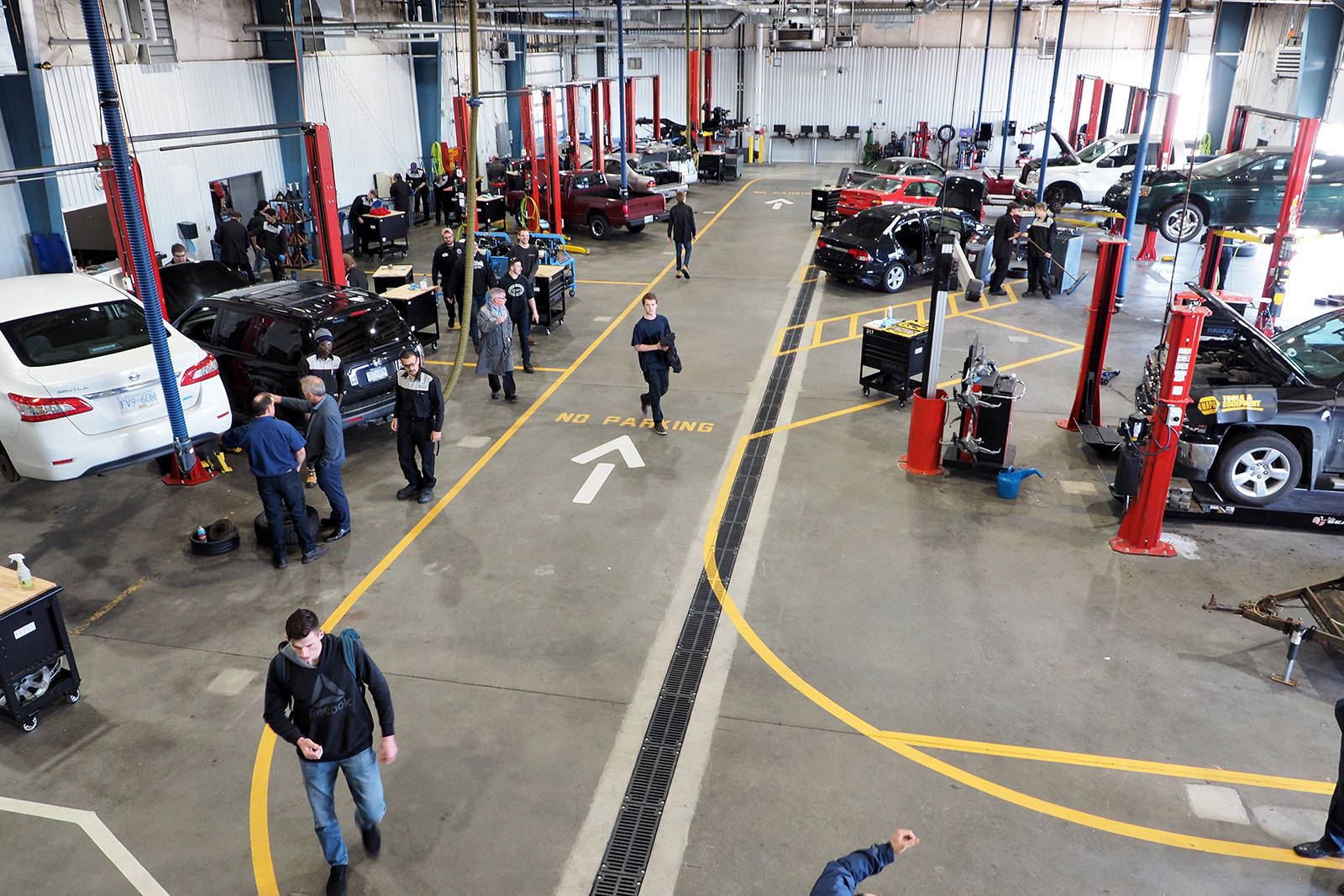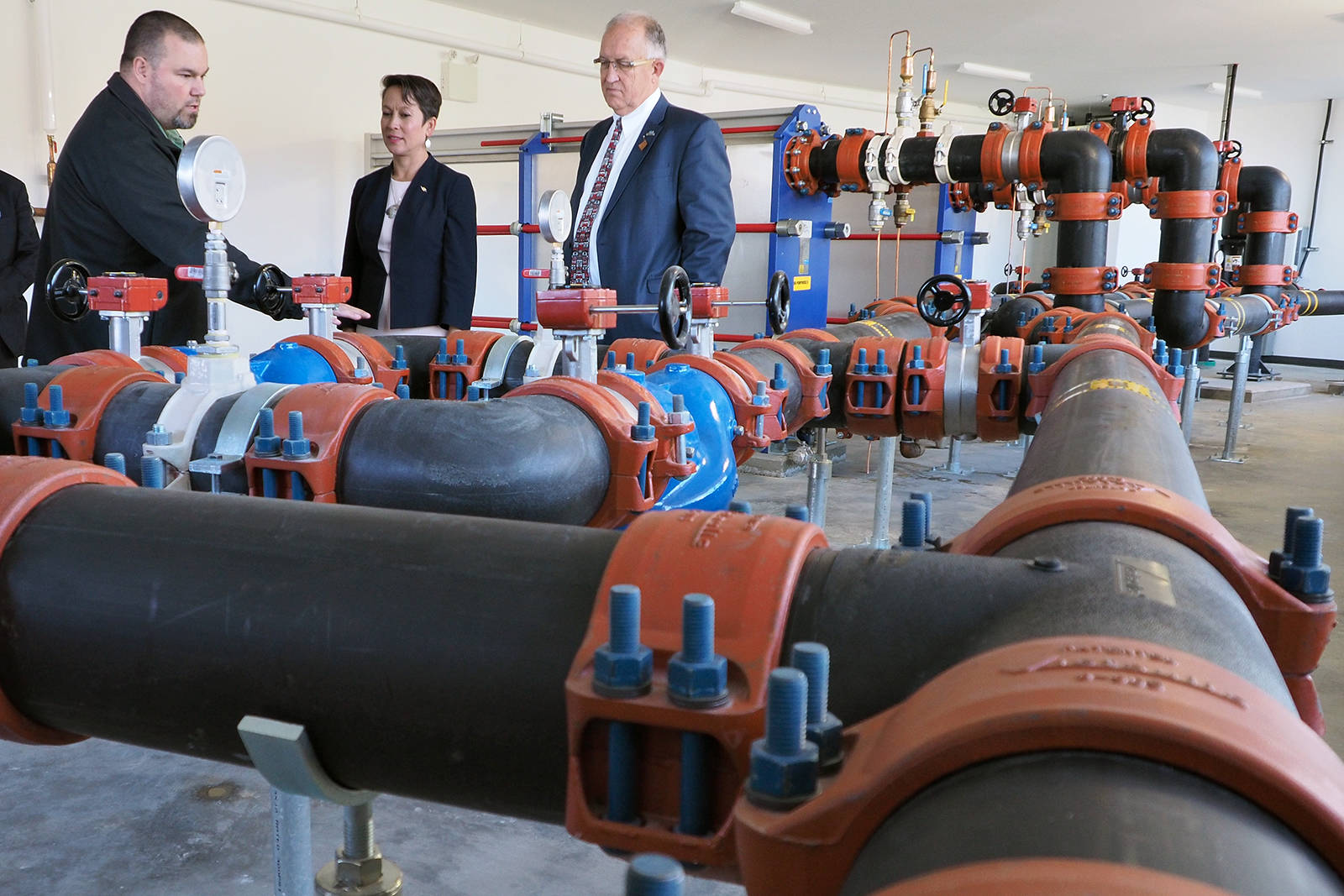Electronic patient simulators, spectrum analysis and chemistry labs, a renovated automotive trades learning centre, a new marine, automotive and trades complex plus a geo-exchange energy transfer station are the newest components added to the business of training students at Vancouver Island University.
The university showcased its newest multimillion-dollar facilities at the Nanaimo campus with a grand opening ceremony followed by tours of the buildings and programs Wednesday that started in the new health and science centre.
The four-storey, 6,855-square-metre building became operational at the beginning of September and is the new home to VIU’s nursing, health care and chemistry programs and includes an electronic patient simulation centre that replicates critical care, home care and emergency room care settings.
“I think it’s a great day because today we’re celebrating a 21st-century facility that’s going to give students 21st-century opportunities to get those 21st-century jobs,“ said Melanie Mark, B.C. minister of advanced education, skill and training.
Mark went on to say that training and facilities with the right equipment provide students with the right opportunities in the field.
“What I love more than the flashy new building and the cutting-edge technology is the message of opening a health sciences centre here in Nanaimo and what that means,” said Candace Boland, VIU student. “As a nursing student it means that I get the advantage of some of the latest technology in simulation and the spaces to practise in here that are as close to being in hospitals here as you can get.”
The $40.9-million cost for the health and science centre was split between $19.4 million from the federal government, $17.5 million from the province and $4 million from VIU and community donors.
Another $20 million was spent to redevelop the marine, automotive and trades complex, which included 2,014 square metres of new structure added to 1,938 square metres of renovations that has increased capacity to 128 full-time students in trades that include motorcycle repair, marine, heavy mechanic and carpentry programs plus an indigenous construction program.
“Another significant change is everything is now laid to what you would see in a real dealership … It’s actual hands-on learning, just like a real business,” said Thomas Flegel, second-year automotive service technician student. “Another impact of the renovation is how I feel about what I have learned in the new renovated space. I also feel as I’m getting more into the trade, that the government values the money that I’m putting into it. I confident that the facility will continue to be upgraded to the industry standard that is needed.”
There is also a new customer service centre to give students real-world experience to business operations within technical industries.
The federal and provincial governments each contributed $9.5 million with another $1 million kicked in by VIU.
Heating and cooling for the Nanaimo campus is now being handled by the district geo-exchange energy system that has tapped into underground water reservoirs in Nanaimo’s old coal mine shafts and tunnels. The project is unique in Canada and intended to bring VIU’s Nanaimo campus carbon footprint to near zero. The system captures waste heat energy and transfers it to the underground water supply to cool buildings and draw heat stored in the water reservoir when buildings require heating.
The system is designed for expansion with the potential to handle the heating and cooling needs of the campus plus structures owned by the city and Nanaimo Ladysmith school district.
Richard Lewis, VIU director of facilities, said there were challenges to setting up the system and it will take time to learn what effects the underground water chemistry will have on its components and it will also take time to log the actual energy savings since the new system is also servicing new facilities, such as the health and science centre, but he estimated the system to be four times as efficient as a system fuelled by natural gas.
“Mechanically it’s a simple system, electrically it’s a simple system, but when you put it all together with everything else it becomes a really unique capacity,” Lewis said.
The system was also constructed as a teaching site where students and the public can learn about the workings of that type of sustainable technology.
photos@nanaimobulletin.com
Like us on Facebook and follow us on Twitter
